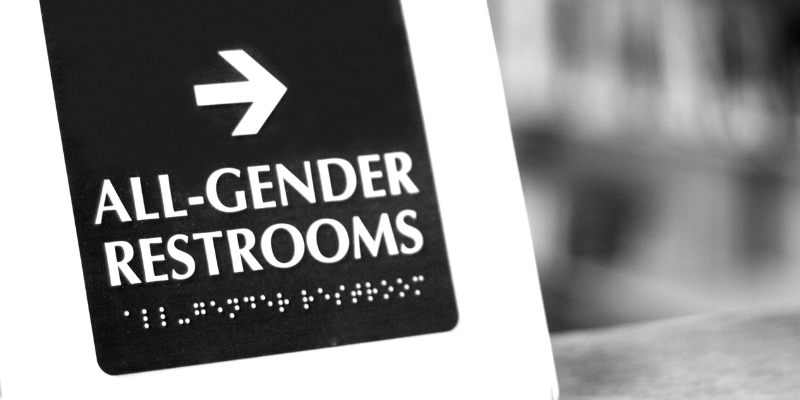
Creating an inclusive workplace takes a lot of time and effort to get right, but one of the most important aspects of this complex equation is the issue of pronouns. Pronouns are a big topic right now, and rightly so — there are few things as personal as how people refer to us, and gender pronouns make a big difference to how understood and valued employees feel in the workplace.
What are pronouns and why are they important?
Pronouns are words we employ in everyday language to refer to ourselves and others. While pronouns are something garnering a lot of press attention at the moment, we actually use them all the time without even thinking about it. They’re one of the primary ways we express our gender identity, whether it’s she/her, he/him or they/them, or a mix of different pronouns. Trans and gender non-conforming people may use they/them pronouns because these are considered gender-neutral compared to she or he which are typically perceived as gendered.
Gender should never be assumed, and if you’re unsure how someone identifies, it’s perfectly acceptable to ask them how they prefer to identify or use gender-neutral terms until you have that information. Pronouns are important in the workplace and in our personal lives, because they help create a more inclusive and respectful environment for all.
In using the correct pronouns for the people in our lives, we show we respect them and their gender identity. Not everyone identifies with the gender they were assigned at birth, and using the wrong pronouns can be incredibly hurtful and invalidating for people.
What can workplaces do to foster inclusivity?
Organisations should issue clear guidance about the use of pronouns in the workplace, using gender-neutral language in all communications and creating an expectation of inclusion for the entire workforce. Here are some best practices all businesses should adopt to promote awareness and develop a culture of inclusivity.
Use pronouns in email signatures
An easy way to introduce gender pronouns into the corporate conversation is within email signatures. It builds awareness and serves as a reminder within the team, while also signalling to gender non-conforming people that they belong. Cis people adding pronouns to their email signature, LinkedIn bio and other places also normalises the practise, which might help somebody feel more comfortable doing so. Companies don’t necessarily need to make it a policy, but should make it a habit to encourage staff to include their pronouns in their email signatures and in other areas such as on Zoom, Slack or LinkedIn.
“No matter what your viewpoint is [on pronouns], individuals should have the autonomy and choice on whether they want to include their pronouns in their email signature or not”, explains corporate solicitor Jonathan Lea “The workplace should aim to create a safe work environment, by fairly juggling freedom of speech and also protection from discrimination and harassment, which is protected under the Equality Act 2010 and the Protection from Harassment Act 1997”.
Include pronouns in introductions
As part of introductions at work, you can ask people to say their name, their role in the business and their gender pronouns, if they’re comfortable doing so. It means that when new hires join the business, or if a client is being introduced to the team, everyone is clear on how one another prefers to be addressed. If you make a mistake, apologise and restate the correct pronouns or apologise privately if you notice your mistake after the conversation has ended. It’s everyone’s individual responsibility to respect and remember the gender pronouns of others.
Create consequences for intentional misgendering
Whether you choose to disclose your pronouns in the office or not is a personal choice. But if a member of staff is intentionally misgendering others with malicious intent, the business needs to have consequences in place for these actions. Studies show that 36% of trans workers aren’t aware of any official process for them to report discrimination, so businesses need to do more to make these processes known to everyone.
Repeatedly using the wrong pronouns for someone when they’ve clearly stated the pronouns they prefer creates a hostile environment for gender non-conforming employees, and harbours an unpleasant work culture. Businesses need to make it clear to all staff how this ties into the workplace’s policy on bullying and harassment.
Make the conversation commonplace
By making the conversation around pronouns commonplace, it removes the taboo and uncertainty around it as a topic. For example, incorporate neutral language such as addressing a group as ‘Hi everyone’ rather than saying ‘hey guys’. It makes sure that everyone feels acknowledged and included and, above all, safe. The most effective leaders understand that they need to model the behaviours they want to see in their staff, so making gender pronouns a priority needs to start at the top.
Respect everyone’s individual journey
It’s good to ask the pronouns that someone wants to use, but the conversation around gender should end there. Not everyone is public about their gender identity and they may not feel comfortable going into detail about where they are in their gender journey, so never ask someone about their plans for gender affirming surgeries or transitioning status.
Regardless of how someone might present themselves, you can’t judge someone’s gender based purely on how they look and it’s inappropriate to invite yourself into that journey by asking a colleague about their identity beyond their pronouns.
The use of personal pronouns is a critical part of everyone’s individual gender identity, and while it may not be something you think about if you align with the gender you were assigned at birth, for those who don’t, it can be very invalidating to be misgendered.
Everyone has the right to feel respected and safe at work, and gender and sexual orientation are protected characteristics under the Equality Act 2010 to prevent discrimination. Whether it be in introducing ourselves verbally to colleagues and clients, an email signature or a an online description of a staff member, knowing how to use pronouns properly in the workplace matters and, most of all, is respecting the individual. It’s easy for businesses to make changes to how they operate to help foster inclusion and develop open communication around pronouns, from including pronouns in introductions and emails to making sure everyone is aware of the repercussions of being disrespectful of someone’s gender identity.
- Log in to post comments
Join the Chamber
Be a part of the largest business membership organisation in the region and tap into a range of valuable business benefits.


